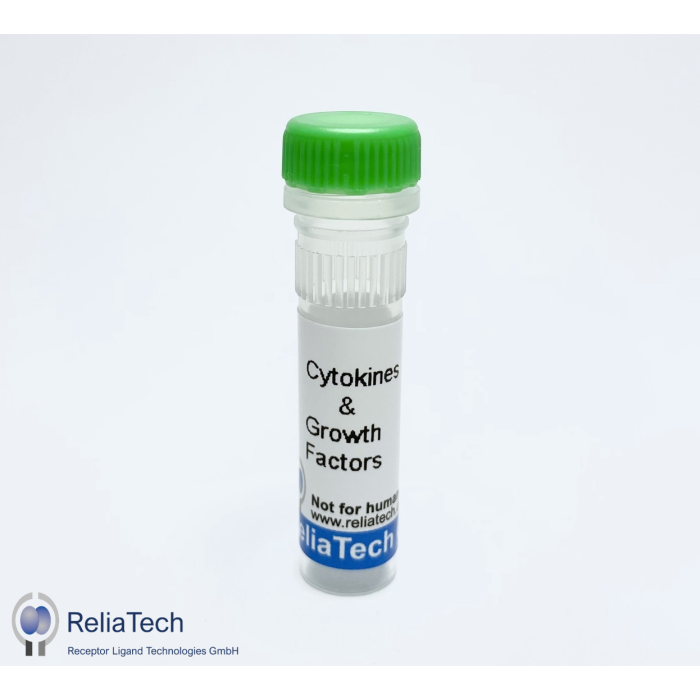Description / human RANKL (TRANCE), soluble protein
RANKL and RANK are members of the TNF superfamily of ligands and receptors that play an important role in the regulation of specific immunity and bone turnover. RANK (receptor) was originally identified as a dendritic cell-membrane protein, which, by interacting with RANKL, augments the ability of dendritic cells. These dendritic cells then stimulate naïve T-cell proliferation in a mixed lymphocyte reaction,promote the survival of RANK + T-cells, and regulate T-cell-dependent immune response. RANKL, which is expressed in a variety of cells,including osteoblasts, fibroblasts, activated T-cells and bone marrow stromal cells, is also capable of interacting with a decoy receptor called OPG. Binding of soluble OPG to sRANKL inhibits osteoclastogenesis by interrupting the signaling between stromal cells and osteoclastic progenitor cells, thereby leading to excess accumulation of bone and cartilage. Human RANKL is reactive on murine cells. Recombinant Human sRANK Ligand is a 22.1 kDa polypeptide comprised of the TNF-homologous region of RANKL and a N-terminal His-tag.
More Information
| Size | 10 µg |
|---|---|
| Source | CHO cells |
| Biological Activity | Determined by its ability to induce NF-κB in RAW264.7 cells in the absence of any cross-linking. |
| Purity Confirmation | > 98% by SDS-PAGE & HPLC analyses |
| Length [aa] | 198 |
| Molecular Weight | 22.1 kDa |
| Species Reactivity | Human |
| Formulation | lyophilized |
| Protein Sequence | sHHHHHHHHP SPGGSGGSQH IRAEKAMVDG SWLDLAKRSK LEAQPFAHLT INATDIPSGS HKVSLSSWYH DRGWGKISNM TFSNGKLIVN QDGFYYLYAN ICFRHHETSG DLATEYLQLM VYVTKTSIKI PSSHTLMKGG STKYWSGNSE FHFYSINVGG FFKLRSGEEI SIEVSNPSLL DPDQDATYFG AFKVRDID |
| Synonyms | soluble Receptor Activator of NF-κB Ligand, TNFSF11, TRANCE (TNF-Related Activation-induced Cytokine), OPGL, ODF (Osteoclast Differentiation Factor), CD254 |
| Uniprot ID | O14788 |
| Protein RefSeq | NP_003692.1 |
| mRNA RefSeq | NM_003701.3 |

